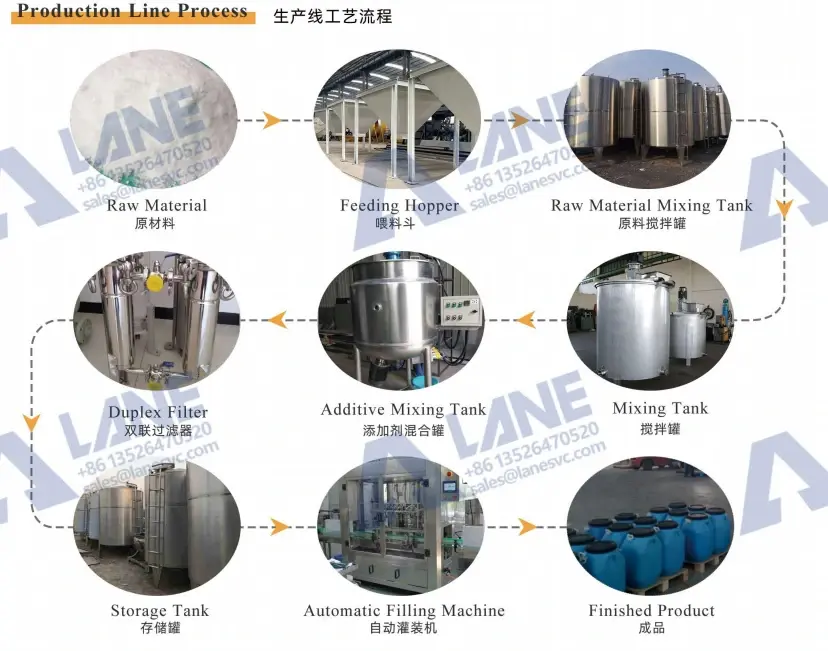Liquid Fertilizer from Fermented Soybean Meal: A Natural Source of Organic Nutrition
- Nancy Ju
- Oct 13
- 4 min read
In modern sustainable agriculture, liquid fertilizer production lines have become increasingly popular due to their high efficiency, easy absorption, and environmental friendliness. Among various organic raw materials, fermented soybean meal stands out as one of the best sources for producing high-quality liquid fertilizer.
This type of fertilizer combines the rich nutrients of soybean protein with the benefits of microbial fermentation, offering plants an ideal balance of organic nitrogen, amino acids, and growth-promoting substances.

Why Soybean Meal?
Soybean meal, a by-product of soybean oil extraction, is one of the richest organic materials available in agriculture. It contains:
45–50% crude protein,
1–2% fat,
5–7% minerals,
Various natural enzymes and carbohydrates.
However, in its raw form, these nutrients are locked in complex organic compounds that plants cannot easily absorb. Through microbial fermentation, proteins are hydrolyzed into small amino acids and peptides, fats are decomposed into fatty acids, and carbohydrates are converted into simple sugars and organic acids.
The result is a bioavailable liquid fertilizer that provides plants with directly absorbable organic nutrients while improving soil microbial activity.
Production Process Overview
The production of liquid fertilizer from fermented soybean meal involves a series of well-controlled biological and mechanical processes. Henan LANE Heavy Industry, as a professional fertilizer equipment manufacturer, provides complete turnkey systems for this process.
(1) Raw Material Preparation
Soybean meal is crushed and mixed with water to achieve an appropriate moisture content (typically 50–60%). Additional materials such as molasses, trace elements, or microbial nutrients may be added to promote fermentation efficiency.
(2) Microbial Inoculation
Beneficial microbial strains—such as Bacillus subtilis, Lactobacillus plantarum, Saccharomyces cerevisiae, and Actinomycetes—are introduced. These microorganisms play a key role in protein hydrolysis and enzyme production.
(3) Aerobic / Anaerobic Fermentation
The mixture is transferred into a fermentation tank or bioreactor, where temperature (30–40°C), pH, and oxygen levels are strictly controlled.Depending on the microbial system used:
Aerobic fermentation enhances amino acid production;
Anaerobic fermentation favors organic acid and growth hormone formation.
The fermentation period generally lasts 5–10 days, after which the material is fully decomposed and converted into a nutrient-dense liquid.
(4) Filtration and Refinement
After fermentation, the mixture is filtered using a solid-liquid separator or dual filter. The liquid portion becomes the fermented soybean meal fertilizer, while the solid residue can be reused as organic compost or animal feed additive.
(5) pH Adjustment and Stabilization
The liquid is adjusted to a stable pH (usually 5.5–6.5), and natural preservatives or stabilizers are added to extend shelf life. Some manufacturers also enrich the fertilizer with seaweed extract, humic acid, or micronutrients to increase its value.
(6) Storage and Packaging
The final product is stored in tanks and filled into 20–1000L containers for shipment. With proper preservation, the product remains stable for over 12 months.

Composition and Nutritional Profile
The chemical composition of fermented soybean meal liquid fertilizer can vary depending on the microbial strain and process conditions, but typically contains:
Component | Content Range | Function |
Total Amino Acids | 6–12% | Promotes protein synthesis, leaf growth |
Organic Nitrogen | 3–6% | Slow-release nitrogen source |
Peptides | 1–3% | Enhances stress resistance |
Organic Acids | 1–2% | Improves nutrient absorption and pH balance |
Potassium (K₂O) | 0.5–1.0% | Strengthens stems and fruit quality |
Trace Elements (Fe, Zn, Mn, B, Cu) | 0.1–0.5% | Supports enzyme functions and photosynthesis |
Additionally, fermentation produces natural plant growth regulators, such as:
Indoleacetic acid (IAA)
Gibberellins
Cytokinins
These bioactive compounds naturally stimulate plant growth and increase yield without synthetic chemicals.
Application Methods
Fermented soybean meal liquid fertilizer is versatile and can be applied in multiple ways:
(1) Foliar Spray
Dilute 500–800 times with water.
Spray directly on leaves during early growth and flowering stages.
Provides rapid nutrient absorption and visible leaf greening.
(2) Drip Irrigation or Fertigation
Apply 10–30 L/ha, depending on crop and soil condition.
Recommended for vegetables, greenhouse crops, and fruit trees.
(3) Soil Drenching or Seedling Treatment
Enhances root development and early plant vigor.
Often used in nurseries or transplanting operations.
(4) Combination with Other Fertilizers
The liquid can be blended with humic acid, fish protein hydrolysate, or seaweed extract to create customized organic fertilizer formulations.
Market Outlook
The global organic fertilizer market is projected to reach over USD 15 billion by 2030, with liquid organic fertilizers showing the fastest growth rate.Fermented soybean meal liquid fertilizer is gaining popularity in:
Asia-Pacific: China, Indonesia, and India — strong demand for sustainable fertilizers.
Africa and Latin America: Used for coffee, cocoa, banana, and sugarcane crops.
Europe and North America: For organic-certified farms and greenhouse vegetables.
This trend represents a major opportunity for fertilizer producers and equipment manufacturers to expand globally.

The liquid fertilizer from fermented soybean meal exemplifies the power of biotechnology to transform simple agricultural residues into high-value, eco-friendly products.
It not only enhances plant growth and soil health but also supports the global shift toward organic, sustainable, and circular agriculture.
By adopting advanced fermentation and liquid fertilizer production technology, producers can achieve:
Efficient waste utilization,
High profit margins, and
Significant environmental benefits.
Henan LANE Heavy Industry is committed to supporting this transformation by offering innovative equipment solutions and technical guidance for clients worldwide. Together, we can build a greener, more productive agricultural future.
Email: sales@lanesvc.com
Contact number: +86 13526470520
Whatsapp: +86 13526470520






Comments